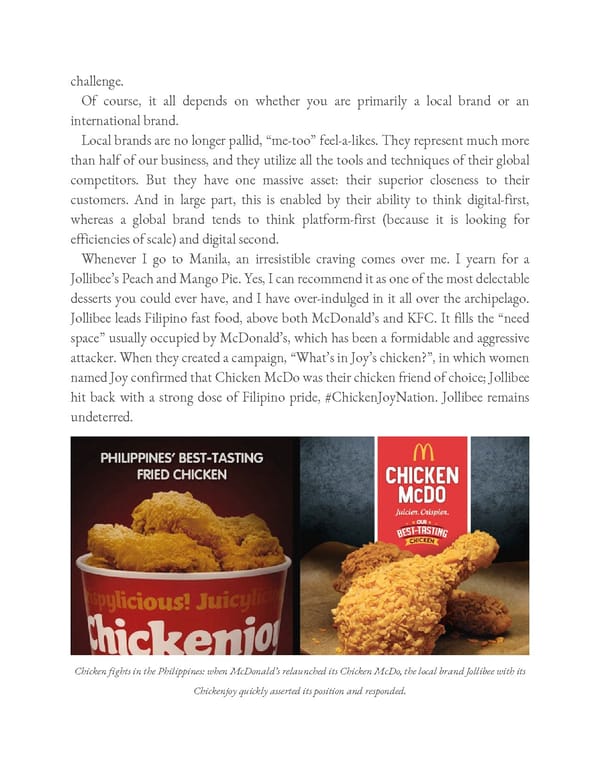challenge. Of course, it all depends on whether you are primarily a local brand or an international brand. Local brands are no longer pallid, “me-too” feel-a-likes. They represent much more than half of our business, and they utilize all the tools and techniques of their global competitors. But they have one massive asset: their superior closeness to their customers. And in large part, this is enabled by their ability to think digital-first, whereas a global brand tends to think platform-first (because it is looking for efficiencies of scale) and digital second. Whenever I go to Manila, an irresistible craving comes over me. I yearn for a Jollibee’s Peach and Mango Pie. Yes, I can recommend it as one of the most delectable desserts you could ever have, and I have over-indulged in it all over the archipelago. Jollibee leads Filipino fast food, above both McDonald’s and KFC. It fills the “need space” usually occupied by McDonald’s, which has been a formidable and aggressive attacker. When they created a campaign, “What’s in Joy’s chicken?”, in which women named Joy confirmed that Chicken McDo was their chicken friend of choice; Jollibee hit back with a strong dose of Filipino pride, #ChickenJoyNation. Jollibee remains undeterred. Chicken fights in the Philippines: when McDonald’s relaunched its Chicken McDo, the local brand Jollibee with its Chickenjoy quickly asserted its position and responded.
 Ogilvy on Advertising in the Digital Age Page 449 Page 451
Ogilvy on Advertising in the Digital Age Page 449 Page 451